Letter to the editor
- Page Path
-
- HOME
- ARTICLE CATEGORY
- Letter to the editor
- Letter to the Editor
- General Pediatrics
- Debate around and impact of digital screen time and media parenting on children’s development
- Gowda Parameshwara Prashanth
- Clin Exp Pediatr. 2025;68(7):551-553. Published online March 11, 2025
-

- Other
- Adolescent hypertension and carotid intima-media thickness: significance of submillimetric differences
- Christian Saleh
- Clin Exp Pediatr. 2025;68(1):104-105. Published online November 28, 2024
-
- Letter to the editor
- Nephrology (Genitourinary)
- Impact of COVID-19 pandemic on healthcare provision in youth with systemic lupus erythematosus
- Punchita Apisrinitirath, Nuanpan Siripen, Pornpimol Rianthavorn
- Clin Exp Pediatr. 2024;67(11):628-631. Published online October 28, 2024
-

- Letter to the Editor
- Gastroenterology
- Pediatric abdominal ultrasound training program for pediatricians
- Soon Chul Kim
- Clin Exp Pediatr. 2024;67(9):474-476. Published online August 20, 2024
-

- Hematology
- Neutropenia following metamizole use in pediatric patients: a multicenter retrospective study
- Meraj Alam Siddiqui, Arzu Akyay, Fatma Burcu Belen Apak, Özgür Carti, Canan Albayrak, Melek İşik, Zühre Kaya, Sevgi Yetgin, Lale Olcay
- Clin Exp Pediatr. 2024;67(8):415-417. Published online July 23, 2024
-

- Developmental and Behavioral Medicine
- Efficacy of social skills group intervention among children with mild autism spectrum disorder
- Lee Ling Low, Ker Yang Chua, Bih Hwa Ching
- Clin Exp Pediatr. 2024;67(7):368-370. Published online May 31, 2024
-

- Neonatology (Perinatology)
- Pentraxin 3 as a marker of early-onset neonatal sepsis
- Safaa ELMeneza, Iman El-Bagoury, Hind Rayes, Amira Hassan
- Clin Exp Pediatr. 2024;67(6):312-314. Published online May 23, 2024
-

- Assessment of iron status and red cell parameters in healthy term small for gestational age neonates at birth
- Arif Hossain, Shorna Rahman, Shahana Akter, Ismat Jahan, Sanjoy Kumer Dey, Abdul Mannan, Mohammod Shahidullah
- Clin Exp Pediatr. 2024;67(4):221-223. Published online March 19, 2024
-
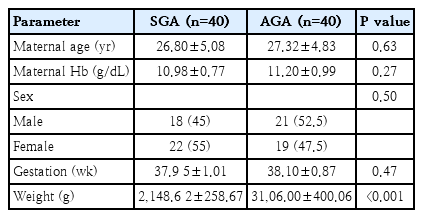
- Pulmonology
- Metabolic syndrome and pulmonary dysfunction in asthmatic children during the COVID-19 pandemic
- Jue Seong Lee, Sang Hyun Park, Yoon Lee, Seunghyun Kim, Wonsuck Yoon, Young Yoo
- Clin Exp Pediatr. 2024;67(3):168-170. Published online February 19, 2024
-
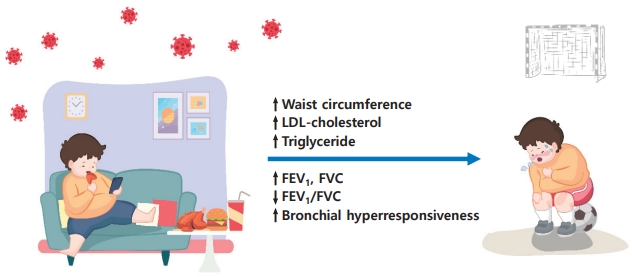
- General Pediatrics
- Vitamin B12 deficiency in anemic children before versus after age 2 years: a form of hidden hunger in India
- Sahil Goel, Ruchika Bhatnagar, Anita Kumari, Brig Prem Lochan Prasad, Lahar Sahai
- Clin Exp Pediatr. 2024;67(2):116-118. Published online January 24, 2024
-
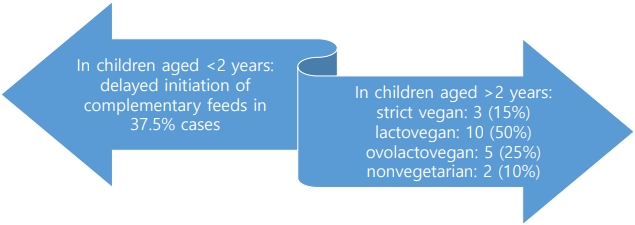
- Neonatology (Perinatology)
- Association between feeding intolerance and intestinal dysbiosis in very premature infants
- Putri Maharani Tristanita Marsubrin, Agus Firmansyah, Rinawati Rohsiswatmo, Zakiudin Munasir, Saptawati Bardosono, Safarina G. Malik, Yuditiya Purwosunu, Ina S. Timan, Tetty Yuniati, Maya Yulindhini
- Clin Exp Pediatr. 2023;66(11):501-503. Published online October 24, 2023
-

- Allergy
- Increased serum eosinophilic cationic protein in children with nonspecific chronic cough
- Young Hwan Kim, Yoon Young Jang, Jieun Jeong, Hai Lee Chung
- Clin Exp Pediatr. 2023;66(10):455-457. Published online September 14, 2023
-
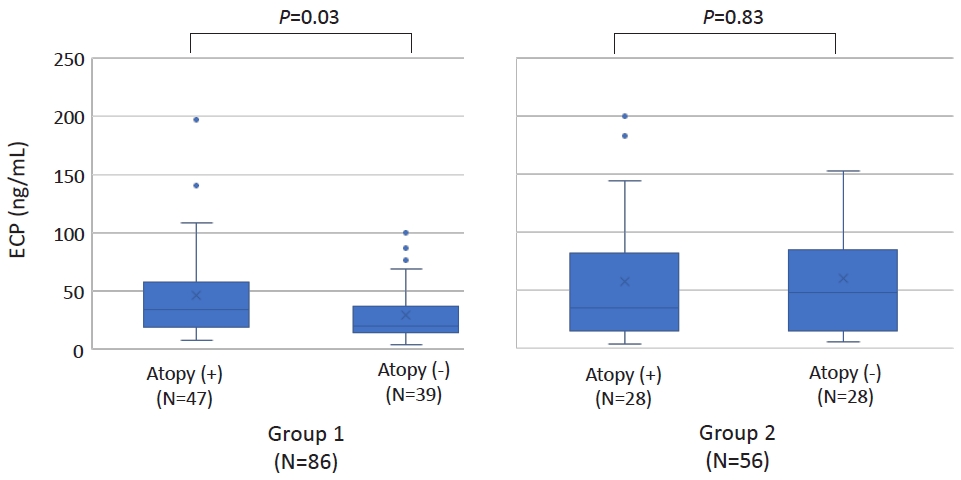
- Infection
- SARS-CoV-2 fecal shedding pattern in pediatric patients with acute COVID-19 or COVID-19-associated multisystem inflammatory syndrome
- Setareh Mamishi, Fatemeh Jalali, Sepideh Benvari, Babak Pourakbari, Mohammad Reza Abdolsalehi, Reihaneh Hosseinpour Sadeghi, Mohammad Shahbabaie, Amene Navaeian, Shima Mahmoudi
- Clin Exp Pediatr. 2023;66(8):366-368. Published online June 14, 2023
-

- Chest x-ray findings in children with COVID-19: lesson learned from referral hospitals in Medan, North Sumatera, Indonesia
- Andrew Limavady, Eka Airlangga, Ririe Fachrina Malisie, Ayodhia Pitaloka Pasaribu
- Clin Exp Pediatr. 2023;66(7):317-319. Published online May 16, 2023
-
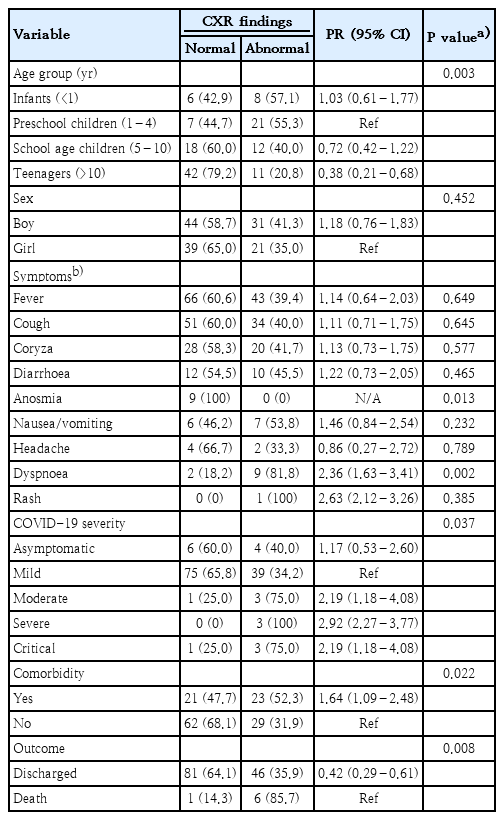
- Developmental and Behavioral Medicine
- Effect of rolling over pattern and caregiver perception on plagiocephaly in Korean infants
- Jin A Yoon, Soo-Yeon Kim, Yong Beom Shin
- Clin Exp Pediatr. 2023;66(6):272-273. Published online May 24, 2023
-

- Endocrinology
- Accuracy of predicted adult height using the Greulich-Pyle method and artificial intelligence medical device
- Dongho Cho, Yun Sun Choi, Hayun Oh, Young min Ahn, Ji-Young Seo
- Clin Exp Pediatr. 2023;66(3):145-147. Published online January 25, 2023
-
- Critical Care Medicine
- Role of serum bilirubin-to-albumin ratio as a prognostic index in critically ill children
- You Min Kang, Ga Eun Kim, Mireu Park, Jong Deok Kim, Min Jung Kim, Yoon Hee Kim, Kyung Won Kim, Myung Hyun Son, Soo Yeon Kim
- Clin Exp Pediatr. 2023;66(2):85-87. Published online December 5, 2022
-
- Cardiology
- Early prophylaxis of cardiomyopathy with beta-blockers and angiotensin receptor blockers in patients with Duchenne muscular dystrophy
- Heirim Lee, Jinyoung Song, I-Seok Kang, June Huh, Jin A Yoon, Yong Beom Shin
- Clin Exp Pediatr. 2022;65(10):507-509. Published online August 22, 2022
-

- Developmental and Behavioral Medicine
- The influence of parental eating behaviors, child-feeding practices, and infants’ temperaments upon infants’ eating behaviors
- Goh Woon Lim, Kyoung Min Shin
- Clin Exp Pediatr. 2022;65(9):466-468. Published online June 27, 2022
-

- Infection
- Changes in epidemiology of parainfluenza virus and respiratory syncytial virus infection during coronavirus disease 2019 pandemic in Korea
- Kyung-Ran Kim, Hwanhee Park, Doo Ri Kim, Yae-Jean Kim
- Clin Exp Pediatr. 2022;65(6):320-321. Published online March 10, 2022
-
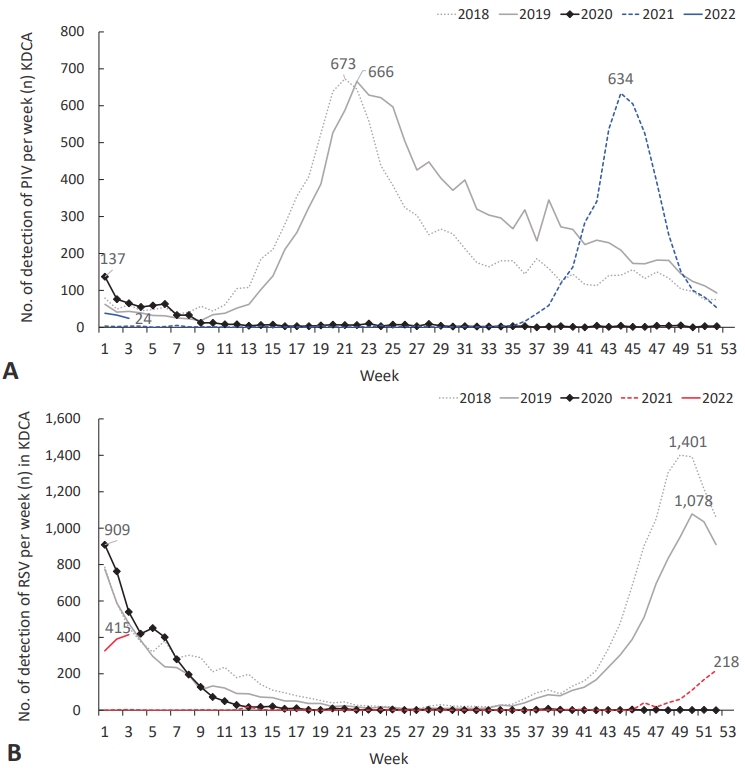
Question: How the epidemiology of other childhood respiratory viruses has changed during coronavirus disease 2019 (COVID-19) in Korea?
Finding: Parainfluenza virus (PIV) typically circulated in the spring, and respiratory syncytial virus (RSV) epidemic started in autumn in Korea before COVID-19 pandemic. PIV and RSV seasons disappeared in 2020 and came back in 2021 with atypical seasonality. PIV season was changed from spring to autumn, and the beginning of RSV season was slightly delayed from autumn to early winter in 2021.
Meaning: Circulation of PIV and RSV was changed to unusual seasons and patterns during COVID-19 pandemic period.
- Neonatology (Perinatology)
- Telemedicine as progressive treatment approach for neonatal jaundice due to the coronavirus disease 2019 pandemic
- Sukanya Sudhir Joshi, Bithiah Roy Benroy, Isabell Nelson Lawrence, Thanuja Jayasri Suresh
- Clin Exp Pediatr. 2022;65(5):269-271. Published online February 7, 2022
-
Question: How can the management of neonatal jaundice (NJ) be enhanced through telemedicine?
Finding: Teleconsultations, drive-through testing, and the use of an application to assess neonatal jaundice at home are being successfully used, but they must be further researched before being implemented on a larger scale.
Meaning: Recent technology allows for the treatment of NJ at home with an application that helps reduce hospital burden.
- Other
- Changes in air pollution and childhood respiratory viral infections in Korea post-COVID-19 outbreak
- Hyung Kyu Park, Jung Yeon Shim
- Clin Exp Pediatr. 2022;65(4):211-213. Published online February 17, 2022
-

- Oncology
- Retrospective review of severe acute respiratory syndrome coronavirus-2 infection in children with acute leukemia from a tertiary care hospital in Northern India
- Suhail Chhabra, Aditya Dabas, Richa Mittal, Neha Goel, Ritabrata Roy Chowdhary, Satyendra Batra, Amitabh Singh, Rani Gera
- Clin Exp Pediatr. 2022;65(3):150-151. Published online November 26, 2021
-
- Other
- Evaluation of simulation-based ultrasound course for pediatricians: a starting point for future training curriculum
- Chon In Kuok, Avis Siu Ha Leung, Jonan Chun Yin Lee, Winnie Kwai Yu Chan
- Clin Exp Pediatr. 2022;65(1):53-55. Published online July 28, 2021
-
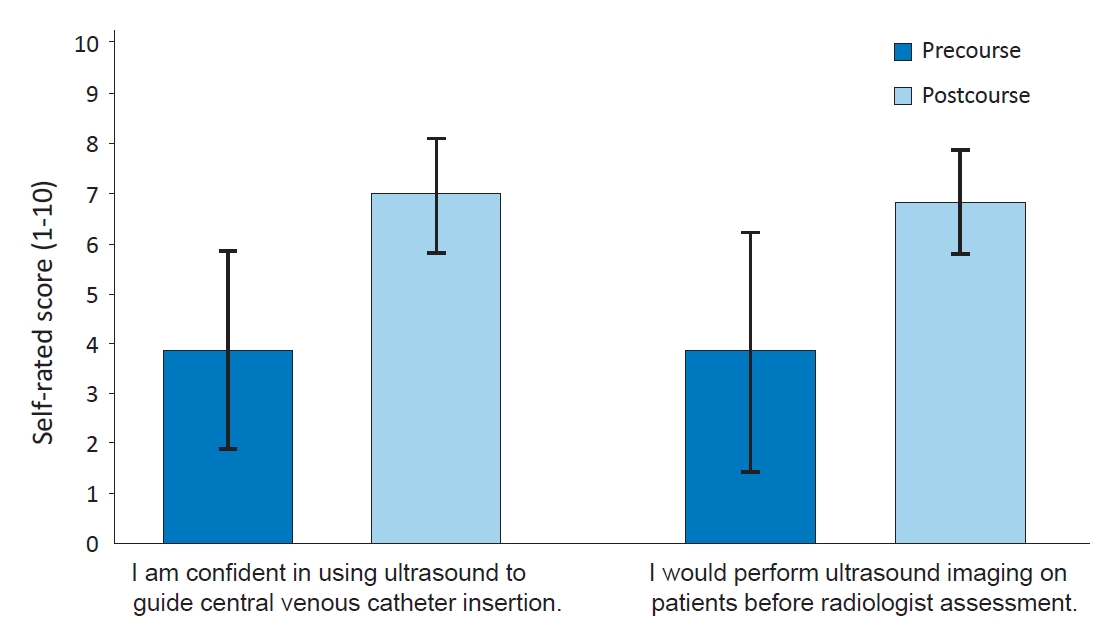
Question: Simulation-based ultrasound training is becoming more popular. Is there a role for pediatricians in such training programs?
Finding: Our program received promising feedback from its participants. Self-rated confidence in image interpretation and ultrasound-guided catheter insertion improved after the simulation. Participants reported a higher preference for performing ultrasound scans before radiologist assessment.
Meaning: Ultrasound training can be considered as part of the pediatric training curriculum in the future.
- Allergy
- Environmental and dietary factors to be checked for treatment of atopic dermatitis in rural children
- Sanghwa Youm, Eunjoo Lee, Jeongmin Lee
- Clin Exp Pediatr. 2021;64(12):661-663. Published online October 1, 2021
-

Question: What are the distinctive features of rural children with atopic dermatitis?
Finding: Birch and dog dander were the second most sensitized aeroallergens (32.6%), followed by house dust mites. Doctors and guardians reported food allergy comorbidities differently (19.9% and 43.5%, respectively). Dietary restrictions without medical evaluation were observed in 39.7% of patients.
Meaning: Effects of pollen distribution and indirect animal exposure should be evaluated. Evidence-based dietary restrictions must be implemented.
- Infection
- Multisystem inflammatory syndrome in children and Kawasaki disease in infants: 2 sides of the same coin?
- Hing Cheong Kok, Dinesh Nair, Ke Juin Wong, Siew Moy Fong
- Clin Exp Pediatr. 2021;64(11):599-601. Published online October 7, 2021
-
Question: Are multisystem inflammatory syndrome in children (MIS-C) and Kawasaki disease (KD) in infants, 2 sides of the same coin?
Finding: Here we report on a 4-month-old girl with MIS-C and signs of KD with shock. Most (83%) infants with MIS-C had features of KD, especially KD shock syndrome.
Meaning: MIS-C is similar to KD, and likely is a consequence of dysregulated immune responses secondary to sudden acute respiratory syndrome coronavirus 2 infection.
- Gastroenterology
- Functional gastrointestinal disorders and smartphone use in adolescents
- Mauro Cinquetti, Marco Biasin, Marco Ventimiglia, Linda Balanzoni, Denise Signorelli, Angelo Pietrobelli
- Clin Exp Pediatr. 2021;64(9):494-496. Published online November 9, 2020
-

Question: Are functional gastrointestinal disorders (FGIDs) common in Italy? If so, what are the associated risk factors?
Finding: In this cross-sectional study of 1,594 adolescents, the prevalence of FGIDs was 30.9% and was mainly associated with smartphone addiction.
Meaning: Smartphone use and dietary habits should be monitored in children with FGIDs.
- General Pediatrics
- Skipping breakfast is associated with lifestyle habits among Japanese pupils
- Jun Kohyama
- Clin Exp Pediatr. 2021;64(8):433-435. Published online November 4, 2020
-
Question: Breakfast is important; however, adolescents are increasingly skipping it.
Finding: Skipping breakfast is independently associated with sleepiness, physical inactivity, dinner irregularity, screen time on school days, poor academic performance, after-school activity, and decreased sleep duration before school day.
Meaning: Reducing screen time on school days, after-school activity, and irregular dinner habits might decrease breakfast skipping, resulting in decreased sleepiness and improved academic performance.
- Hyperinflammatory syndrome in children during the coronavirus disease 2019 pandemic in sub-Himalayan region
- Seema Sharma, Shikha Verma, Isha Bhatia, Ravinder Singh, Mohit Bajaj, Milap Sharma
- Clin Exp Pediatr. 2021;64(7):370-372. Published online May 11, 2021
-
Question: Is there an increase in patients with hyperinflammatory syndrome during the coronavirus disease 2019 pandemic?
Finding: We found 10 patients with hyperinflammatory syndrome with poor outcome during a period of 2 months in a single tertiary care centre.
Meaning: Pediatricians who come across patients with muco cutaneous manifestations and multiorgan involvement should consider hyperinflammatory syndrome. Early recognition and prompt treatment of such patients may result in promising outcome.
- Neonatology (Perinatology)
- Role of neutrophil CD11b expression in diagnosis of earlyonset neonatal sepsis in full-term infant
- Safaa ELMeneza, Walaa Mohamed, Iman Elbagoury, Karima Bahagat
- Clin Exp Pediatr. 2021;64(1):44-45. Published online April 14, 2020
-
Question: Can CD11b detect sepsis in full-term infants with suspected sepsis?
Finding: The percentage of neutrophils expressing CD11b was significantly upregulated in the sepsis and suspected sepsis groups versus the control group.
Meaning: CD11b is a sensitive marker for sepsis and suspected sepsis in full-term neonates and it may be added to sepsis markers. This information would allow the neonatologist to confidently discontinue antibiotic use as long as the neonate is clinically stable.
-

-
-
6.02024CiteScore98th percentilePowered by
-
Impact Factor3.6
-
- TOPICS
- ARTICLE CATEGORY
- Editorial Office
-
Korean Pediatric Society
#1606 Seocho World Officetel, 19 Seoun-ro, Seocho-ku, Seoul 06732, Korea
Tel: +82-2-3473-7306 Fax: +82-2-3473-7307 E-mail: office@e-cep.org
Clinical and Experimental Pediatrics is an open access journal. All articles are distributed under the terms of the Creative Commons Attribution NonCommercial License (http://creativecommons.org/licenses/by-nc/4.0/)
Copyright © 2025 by Korean Pediatric Society.











